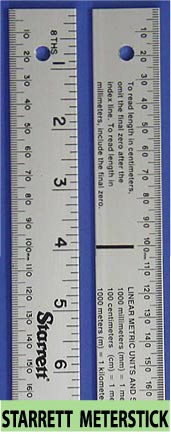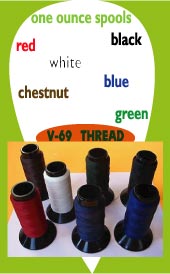
 Custom Search
|
| sails |
| plans |
| epoxy |
| rope/line |
| hardware |
| canoe/kayak |
| sailmaking |
| materials |
| models |
| media |
| tools |
| gear |
| join |
| home |
| indexes |
| classifieds |
| calendar |
| archives |
| about |
| links |
| Join Duckworks Get free newsletter CLICK HERE |
|
|
| The Keuka Whaler - Part Eleven |
by Craig Hohm - The Finger Lakes, New York - USA |
The Whaleboat hit the water to the sound of viking horns. It floated! The crew climbed aboard and we began the process of sorting out the 140 lbs/100 linear feet of the oars. I feel certain there is some organized way to deal with these monsters but can't say we have figured it out yet. Once everyone had their oar in place we began the process of learning to row in unison. After fifteen minutes or so we were starting to come into sync. I believe that the most efficient stroke is short, involving a moderate (not extreme) stretch in the reach. More than once a giant crustacean took the rower out of their seat. Still, within minutes we were moving along very smoothly. Notice the bend in the oars. The boat is very stable and very slippery, moving along at an easy 4-5 kn with coordinated (not strenuous) rowing. There needs to be a standard series of commands for handling the oars, and thanks to Google and the Navy, here they are: When coming alongside the dock for example, I say " toss oars" and the oars are pointed straight up. It takes a fair amount of muscle to lift the oar up like this. In the middle of the lake it is easier to pull them athwartship to rest: "bank oars". There was not much wind, but we did pull out the sails and fiddle with the set up. The mizzen was easy, the main was not. The 16' sprit is a handful even when it is not blowing and requires at least two people who know what they are doing. Here it is is fully rigged, 15" & 16" foot oars stowed on the centerline, with the 17' and steering oars hung in the oar locks. A few weeks later we had the official launch, hosted by Harbor Club Marina (thanks George), and featuring boat rides, Hohmbrew (thanks John), music, and maritime skills.
We rigged a target on strings across the harbor and took shots at it with a full sized harpoon (10). It was not an easy hit, there being only three strikes the whole day, and a dispute broke out over the winner..… I suppose I should cede to my son.
Several crews tried out the oars and we got the sails up later. Again, not much wind. There was a fair amount of piratical fervor among the crews who regularly cried out for pillaging, razing, etc. It is fortunate that this boat, without engine, does not need a registration in the state of NY; without those registration numbers, no one will be able to prove anything. If you find yourself hosting one of these events, with the public exposure of your sweetheart to shoes, beer cans, etc,
bear in mind the mantra " It is only new once", and get the scratches over with. The biggest challenge of this summer turned out to be trying to get enough crew to take the boat out . It can be sailed by three able seamen but more is better. It will move under two paddles (stored along the centerboard trunk) in light airs but needs the rowers to move well into the wind. Season events 1. Geneva "The Keuka Whaler is a prototype community boat for the Finger Lakes, a boat for people to row and sail together in no-octane regattas. This boat is a replica of an 1850's sperm whale fishery boat lofted from the offsets of the Newport News Mariner's Museum boat in Virginia. These offsets are from Willets Ansel's "The Whaleboat" (1978). The construction was adapted for lapstrake epoxy but the hull shape is identical to the original. The total materials for the hull were about $3000 (not including trailer, sails and hardware). I have the hope that other groups will build their own whalers and join us to row and sail, and be heros of the lakes. To that end, I will offer the molds and the full size lofting (along with my advice) to any group or individual who is ready to build the next boat. " (* this offer stands to on-line readers as well). Picking up the boat on Sunday night I was glad to have the bilge pump. Someone more clever than me can figure out the volume, but I heard there were 3" of rain the night before; it was a lot. 2. The Odyssey
We set out about 10 against a steady 6-8 kn head wind. The Waterdog served as support for snacks, rest, bathrooms, etc. We had 8 crew, and rotated two off in the Waterdog during the trek. Altogether it took us about 6 hours to row the 18 miles down the lake, making about 3 kn against the wind. We received a warm welcome from the gas engine runabouts when we arrived. 3. Ithaca 4. The end of the season.
Aficianotoes will notice that the snotters needs to be tightened. The big sprit is a powerful sail and a quantitative difference in handling compared to the mizzen. It is 120 sf with halyard, brail, sheet, peak out haul and sprit halyard. It is boomless except when running downwind. The sheet does not require a block. In practice reefing is pretty straightforward with this sail once it is set up; the sprit halyard is essential. (see article 5 in this series). Tweaks? Now the boat is snugged down in the barn for the winter. Many people have asked me how long this build took. I actually don't know but I know for a fact that I could have finished about 2 months earlier if I was not required to twirl my cat around on the swivel stool twice a day. He would come into the shop and disrupt work until he was given a spin. I believe I also wasted about 2 months looking for my pencil. The boat was built over three winters. I would like to acknowledge my debts to:
Looking forward to next year. *the smudge on the photo below visually represents me having a really good idea and then promptly forgetting it. Bonus audio: The Whaler's Song Lyrics:
|
|





















